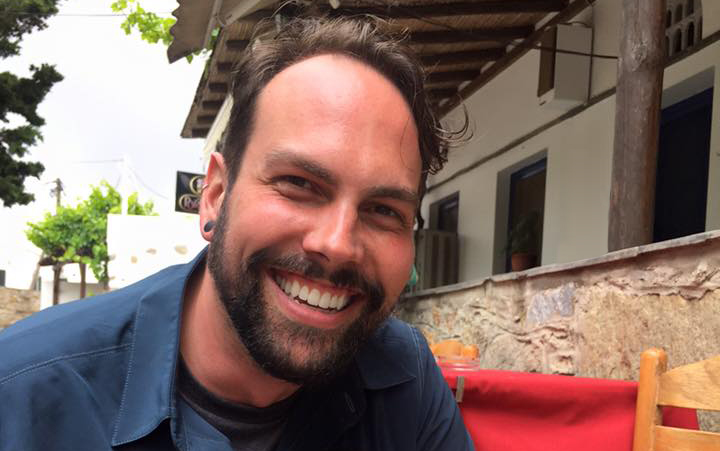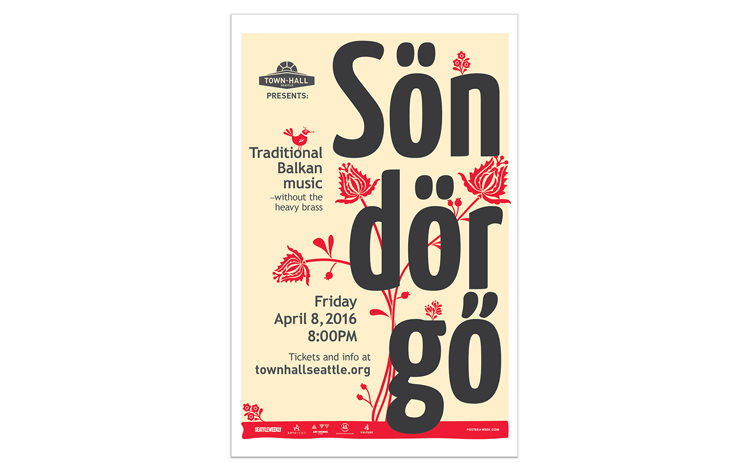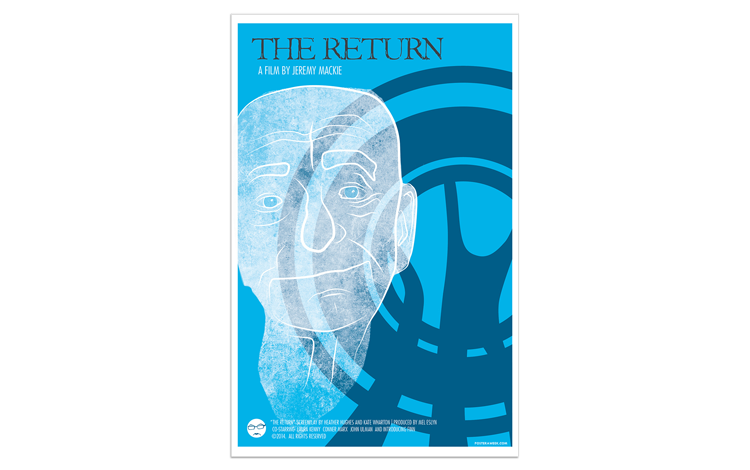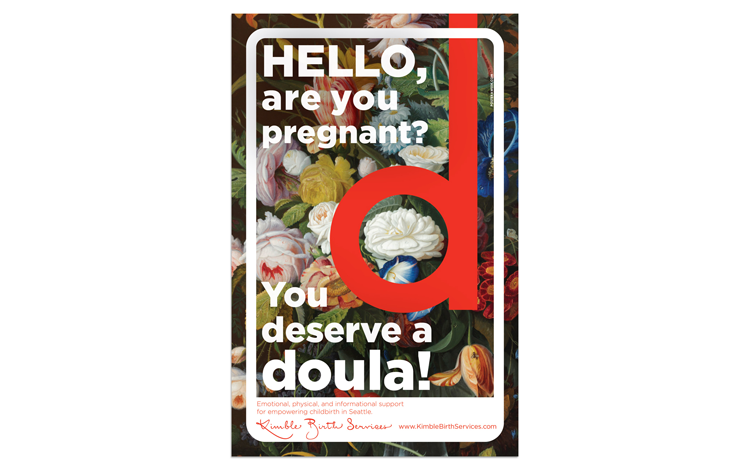2011 Design alum, Courtney Comfort, is a UX Designer at Microsoft. Back in January of 2016, Courtney kicked off a personal project called Poster a Week. The concept to “keep [his] layout skills sharp” and keep himself engaged in fulfilling work. With summer approaching, and more personal projects on the horizon, we caught up with Courtney to talk about his project, his process, and his philosophy about personal projects.

Courtney Comfort (Design ’11)
What is your position and day-to-day role as a designer at Microsoft?
During the day I work as a user experience designer for Microsoft’s Cloud & Enterprise division. Our studio focuses mostly on highly-technical user scenarios for IT and network administrators which provides lots of complex problems to work through, but with less focus on compelling concepts, layout, and visual presentation. I work with a talented team of designers from all over the world and enjoy the exposure to unique perspectives and ways of thinking.
Can you give us a rundown of the Poster a Week project? How did you come up with this idea?
Posteraweek.com is a site anyone can visit and fill out an online form to request a free poster promoting their event, cause, or organization. I’ll design posters for pretty much anything: garage sales; rock shows; art, theater, and film projects—so long as it isn’t a business or service that is just looking for free advertising, I’ll consider it. In trade for pro bono design services I get interesting, real-world material to work on and at the end of the week, someone who might not be able to afford or have access to professional graphic design gets a free poster.
I’ve been kicking around the idea of doing something like this for years, but finally decided to make it happen in January when I realized the domain posteraweek.com was available. Since I graduated from SCCA, my career has been focused on creating digital and interactive experiences inside of existing brands, which doesn’t allow lot of space for creative layout or typographic exploration. I remembered how much I enjoyed the quick turn-around and conceptual freedom in Marc’s second-year poster design class, where he assigned a new poster for us to execute every week, and I decided to come up with a way to replicate that experience in a way that might provide a service to the community.
What is your process like when creating each poster?
My specific process varies a little for each poster, but always starts with research. The online poster request form serves as a mini creative brief and gives me insight into what the requester wants to communicate and the tone or mood they’re going for. It also points me in the right direction to start learning more about who they are and what they do while giving them the opportunity to provide samples or any graphics they want on the poster
I initially try to immerse myself in whatever information and media is available while I’m kicking around concepts. When I worked on the poster for Söndörgő, I listened to the band’s music for hours during the initial research and throughout the actual design and layout of the poster. Often I’ll search the internet for related imagery or try to get a sense of the physical space where an event is taking place. If no stylistic samples are provided, I consider styles or techniques I’ve been wanting to experiment with that might be appropriate for the concept and message and then start my explorations there. But at the end of the week (and just like any design project with a deadline) you learn to be happy with what you were able to accomplish in the allotted time and move on to the next thing.

Sondorgo
What is your perspective on personal projects in general? What place do they hold in your life and career as a designer?
I’ve never really been the type of creative that has that insatiable, burning desire to be constantly making things twenty-four hours a day. While I admire their energy and drive, I’ve generally been able to satisfy that part of my personality within the creative outlet of my day-to-day career. That’s the magic of being a designer: you get to make a living getting that out of your system. If and when you reach a point where your professional work isn’t totally satiating that need, it’s great to seek out and engage in work that continues to challenge and stretch your skill-set while being personally fulfilling. Try to minimize as much of the cruft that distorts and diminishes the creative process when you’re working on personal projects, because otherwise it’s just work.

The Return
What have you learned during this whole Poster a Week process? Has anything unexpected come out of the work?
Most of the learning from this project so far has centered around discovering what’s effective in terms of promoting a project like this. I made an assumption that people who want posters made for them are also consumers of posters, so I had several hundred posters printed and hung all over the city promoting the website, but that didn’t result in a notable increase in traffic or requests. I’ve also experimented with Google AdWords and paid search results, but the only thing that’s really resulted in notable engagement so far is social media and word-of-mouth exposure. I hope as more people learn about the site and print and distribute the posters I design, it will eventually support itself and I can focus more on the actual design work.
As for what’s been surprising, I’ve always thought of myself as a designer who didn’t have a particular style or look. The more I work on self-guided pieces, the more I’m starting to recognize some patterns and preferences emerging from my work, which is kind of exciting. I’m enjoying seeing my voice in the work.

Kimble Birth Services
With summer around the corner for SCCA students, and more time to dedicate to personal work becoming an option, what would you suggest students think about when choosing personal projects (especially something like yours with a more long term scope)?
If you find yourself with spare time and unchanneled design energy this summer, I would suggest using your time and effort to complete your internship! First-year students sometimes don’t feel like they’re ready after one year—but, you really are—and summer is a great time to start getting an idea of what does and doesn’t work for you in a professional design environment. Seriously, don’t wait until second year to do your internship. Now is the perfect time to start identifying some places you might be interested in working and pursuing those relationships now. I can tell you from experience that nothing magic will happen in second year to make you suddenly more qualified or more sure of what you want for your career post-SCCA, so start exploring your opportunities now. You’ll be glad you did when you can focus all your efforts into landing the perfect first-design-gig once you’re done with the portfolio show next year.
Any other words of wisdom as first year students begin their ascent into second year and Portshowlio approaches for second year students?
The density of creative talent, expert guidance, the trust and insightful criticism you’ve built with the people around you is really hard to find out there in the professional world. I know you’re working hard and it seems like it will never end, but it will all be over before you know it. Make sure you make the most of this time and of each other.
For the second year students, preparing for the portfolio show is when you really start to trust in your own abilities and define the work that represents you. I know you still have a lot of sleepless nights ahead, but once you get through this, you’ll be in an excellent place to launch your design career. Apply everything you have left in you, now! What you’re designing is your own future.
—
Check out all of Courtney’s Poster a Week project and his full portfolio website.